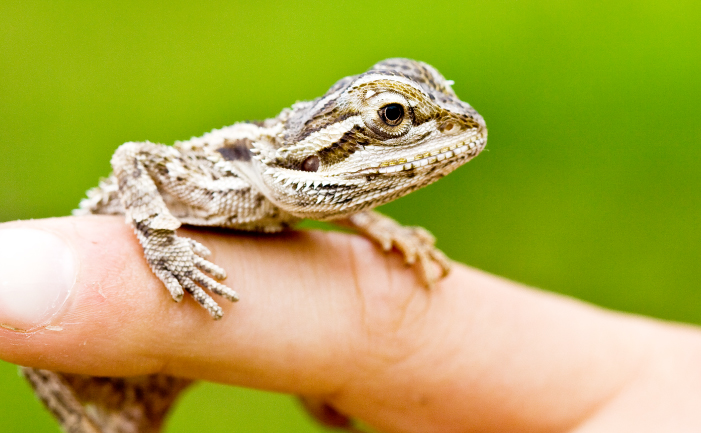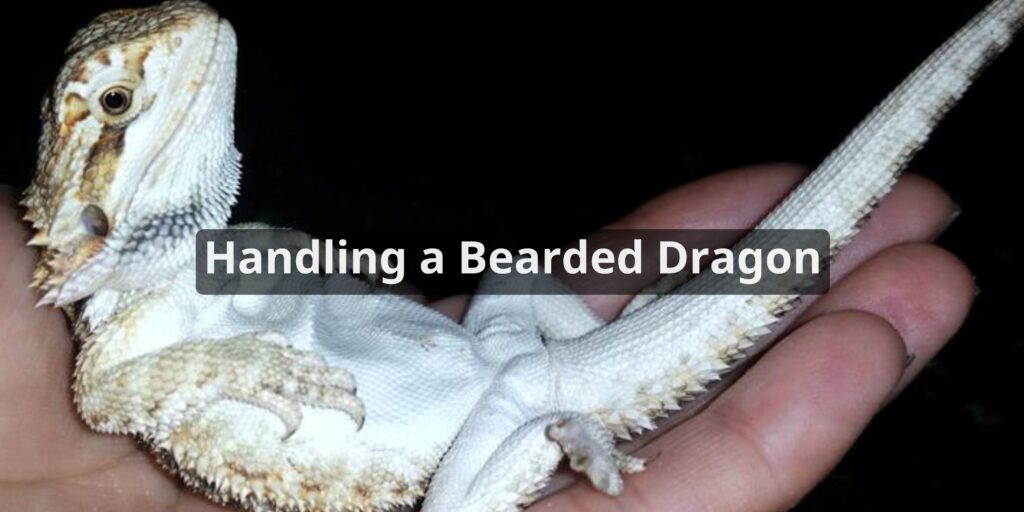Bearded dragons make great pet reptiles. They are docile, interactive, and relatively easy to care for. However, there are some important things to know about properly handling a bearded dragon. Proper handling helps ensure the health and wellbeing of your bearded dragon.
Getting Started with Handling

When you first bring home your bearded dragon, it’s important to give them time to get accustomed to their new environment before trying to handle them. Let them explore their enclosure freely for the first few days. After about a week, you can begin the handling process. Move slowly and avoid making sudden movements that may startle them.
Handling Tips
- Wash your hands before and after handling to prevent spreading germs or bacteria.
- Approach your bearded dragon slowly and calmly. Sudden movements can stress them.
- Place one hand under their belly near their legs and use the other to support their back and chest area. Make sure to support the full weight of their body.
- Never pick up a bearded dragon by the tail or legs. This can injure them.
- Keep handling sessions brief at first, no more than 10-15 minutes. Slowly build up the handling time.
- Pay attention to your bearded dragon’s body language. Signs of stress include dark beard, puffed out beard, arm waving, mouth gaping, attempts to run away or scratching. Return them to their enclosure if stressed.
- Bearded dragons feel more secure when kept low to the ground. Avoid holding them too high up.
- Do not dangle or suspend them in midair. Always fully support their body weight when handling.
Establishing Trust
Gaining your bearded dragon’s trust takes time, consistency and positive reinforcement. Start with brief but frequent handling sessions to get them accustomed to being held. Provide treats during handling so they associate human touch with good things. Gentle stroking along the head, chin and back can help relax them. Avoid touching their underside initially until they are comfortable. Let them walk on your hands and explore you at their own pace. Eventually with regular gentle handling, your bearded dragon will look forward to their time with you.
Handling Frequency
Most bearded dragons enjoy being handled, especially when they are young. Regular handling provides important mental stimulation and social interaction. It’s recommended to handle your bearded dragon for at least 20-30 minutes a few times weekly. Make sure they have proper basking temperatures and adequate UVB exposure before and after handling. Wash hands before and after. Once your bearded dragon reaches adult size around 18-24 months, they may become less interested in frequent handling. Pay attention to their behavior and adjust handling routines accordingly.
Handling Precautions
- Bearded dragons can carry Salmonella bacteria that can be harmful to people. Always wash hands thoroughly before and after handling any reptile.
- Avoid handling for 2 weeks after bringing home a new bearded dragon. This allows them to settle in.
- Do not handle them after feeding for at least 1-2 hours. Handling too soon can cause regurgitation.
- Limit handling during shedding cycles. Their skin is sensitive during this time.
- Never handle a bearded dragon that is sleeping or seems lethargic. This stresses them.
- Closely supervise children when handling bearded dragons. Do not allow rough play.
- Never grab your bearded dragon by the tail or squeeze their body. Support their full weight.
Signs of a Healthy Bearded Dragon

When handling your bearded dragon, assess their overall health. Healthy bearded dragons will demonstrate:
- Good appetite and energy levels
- Clear eyes, nose, and vent area
- Healthy skin with no flaky patches or discoloration
- Muscular thighs and rounded tail base
- Regular, solid urates and feces
- Relaxed demeanor and willingness to be handled
Get to know your bearded dragon’s normal behavior. If you notice any differences, consult an exotic veterinarian. Addressing health issues early improves outcomes.
Conclusion
Regular handling done properly supports a bearded dragon’s health and wellbeing. Go slowly, be gentle, and pay attention to their cues. With time and patience, a bearded dragon can become comfortable with handling and interacting with their owner. Handling provides great physical activity and mental enrichment. Just remember to always follow basic hygiene and handling precautions. By understanding proper handling techniques, you and your bearded dragon can enjoy a close bond built on trust.
FAQs About Handling a Bearded Dragon
What are the signs that my bearded dragon enjoys or dislikes being handled?
Enjoyment signs include relaxed body posture, slow movements, and a calm demeanor. Dislike signs include agitation, hissing, or puffing up.
Can excessive handling stress out a bearded dragon?
Yes, excessive handling can stress your dragon. Limit handling to avoid overwhelming it, and monitor for signs of stress or discomfort.
What should I do if my bearded dragon becomes agitated or aggressive while being handled?
Return your dragon to its enclosure if it becomes agitated or shows signs of aggression. Assess the cause and try handling again later when it’s calmer.
Are there health considerations when handling a bearded dragon, such as disease transmission?
Yes, practice good hygiene and handwashing before and after handling to prevent disease transmission. Be cautious when handling if your dragon has health issues.
How can I make handling sessions enjoyable and enriching for my bearded dragon?
Offer treats during and after handling, create a calm and safe environment, and speak softly to create positive associations with handling.
What precautions should I take when allowing children to handle a bearded dragon?
Supervise children closely, teach them gentle handling, and ensure they wash their hands before and after. Be prepared to step in if the dragon shows signs of stress or discomfort.



